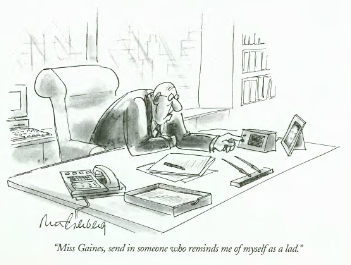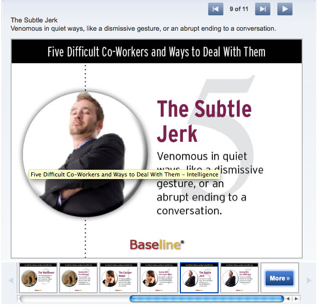This is the time of year when we give thanks for everything that makes life worthwhile — family, friends, food, shelter, and for those of us who are lucky enough to have it, work that we enjoy and find fulfilling.
So — while most of our Thanksgiving celebrations are family- or community-centric — this is also a good time to think about, and hopefully give thanks for, what our colleagues and employees add to our lives. While every employee can potentially contribute to the growth and well-being of an organization, some require an extra effort on the part of the management to be their best.
Turning UEs into Members of the Team
What can turn UEs into friendly team workers? Thanksgiving shows the way.
Acknowledge and appreciate: It never hurts to acknowledge good work. Managers tend to ignore the employee who’s doing good work (after all, she’s just doing her job, right?) and focus instead on the “squeaky wheel” of unmangeability. But this unbalanced approach can leave your best employees feeling underappreciated, and overlooked.
Instead of taking good work for granted, look for things the your employees are doing right, and positively acknowledge their performance.
Be specific and objective: When you set out to acknowledge good work, be specific about who you’re appreciating, and why. Speak directly to that one employee who excelled, not to a group of people. And give specifics about his performance of a particular task. This is very different from giving undifferentiated praise (“Brownie, you’re doing a heck of a job!”), which lacks credibility because it is generic, vague, and subjective. Specific acknowledgements will motivate your employees; generic praise will not.
Just do it: Don’t worry about how you show your appreciation. There is no need for your appreciative gesture to be grand or elaborate. Your best move is to acknowledge you employee with a brief, face-to-face comment, but it’s also fine to communicate by voice mail, email, or even text. The main thing is, as soon as you observe something positive, go ahead and acknowledge it.
Acknowledgments Build Trust, and Performance
Your timely acknowledgement and appreciation will remain etched in your employee’s mind and make their Thanksgiving season even more memorable.
And best of all, once you start making regular acknowledgments, you’ll be giving thanks for the benefits of having a happier and more manageable staff.






